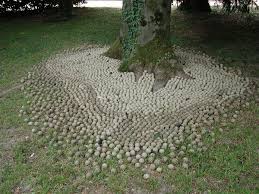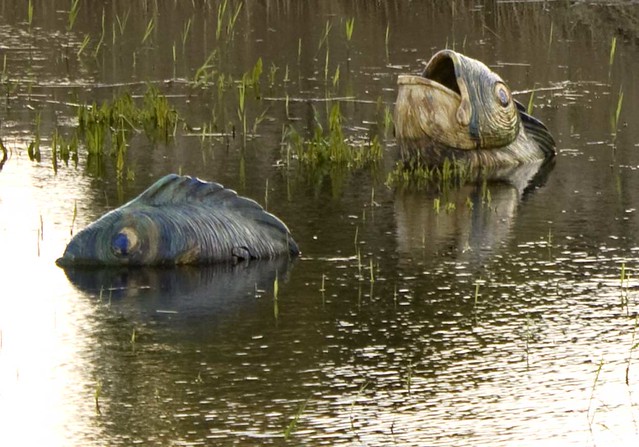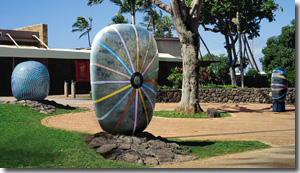Creating art work out doors that is able to hold its own in the landscape is no small task. You have to compete with mountains, trees, clouds, etc.. Even very strong pieces of art can have the same visual impact as a piece of garbage dropped on the ground if it isn’t presented right. I have some examples here of successful out door works and I want to point out a few of the qualities that work for them.
First of all an out door piece needs to be built in a scale that is appropriate to the setting. This basically means one of two things it either has to be very large or there needs to be lots (like as in hundreds or thousands) of little things that work together to make a large visual impact. In Spiral Jetty by Robert Smithson 1,500 linear feet of material was poured into the Great Salt Lake to from a very large spiral peninsula.
Another quality that most good outdoor art has is that it interacts harmoniously with the existing land scape. Rather than appearing to be an object that was plopped in the middle of a field the piece should transform the surrounding area into a work of art. Spiral Jetty turns the hill behind it, the shore line and the surrounding water into the art piece. The salt changes the color of the rocks and the shallow water in the spiral. This is one of the reasons that Smithson chose this location.
In The Lightning Field by Walter De Maria 20 foot steel poles cover a 5,280 x 3,300 foot area. The poles interact well with the surrounding, but probably the most impressive aspect of the work is what happens during electrical storms. Each time lightning strikes one of the poles it creates a jagged line that connects the work to the clouds. For a brief moment De Maria’s piece incorporates both earth and sky into one immense art piece.

Out door works can incorporate found objects that when organized in the right way will create an interesting or unexpected effect.

In this piece Andy Goldsworthy uses reeds, thorns and the reflective quality of the water to create his work. While the piece exists harmoniously with the land scape it also stands out as it’s most compelling physical feature. Goldsworthy does this by using the elements of design (line, shape, pattern, rhythm, etc.) to draw the eye towards it. outdoor art needs to simultaneously blend in and stand out. This is not easy to do.

This piece incorporates hundreds of balls of clay organized around the trunk of a tree to make an interesting visual impact. The tree and the lawn become parts of the statement here as well.

These large ceramic fish interact whimsically with the pond and surroundings. This effect is mostly pulled off by the way that they were made to look like they are swimming.

These pieces by Jun Kaneko show how simple forms can have greater visual impact than more intricate ones. When working outside it is important to think less about the subject matter of your piece than about the form and how it will interact with it’s surroundings. Kaneko also uses pattern and color to his advantage in these pieces.

Robert Arneson was careful to maintain simple egg forms with his giant heads in this piece. This enabled his work to maintain a strong visual impact even when it would be easy to be distracted with the details of the subject mater.